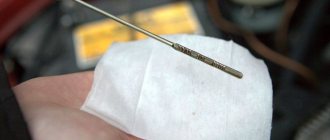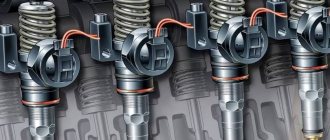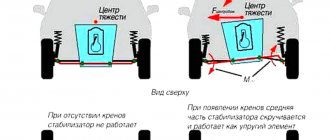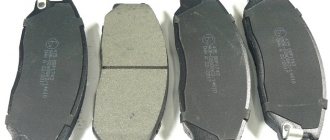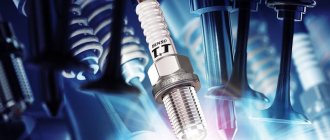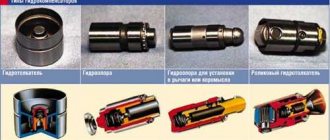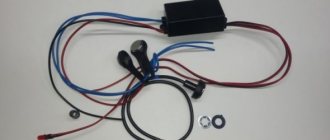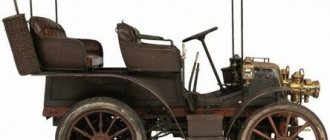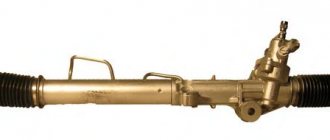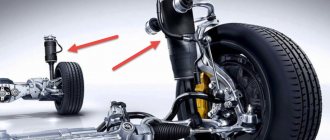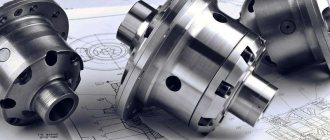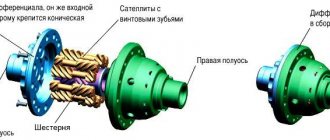The VAZ-2114 car is equipped with a modern injection internal combustion engine. The operation of the power unit is completely controlled by the ECU (electronic engine control unit or the “brains” of the machine). It is he who is responsible for the timely supply of fuel to the manifold, sparks to ignite the mixture, and he is responsible for the stable operation of the engine in all modes. Let's find out how the “brains” of the VAZ-2114 work, what types they are, where the ECU is located, what malfunctions the owner may encounter, and how to diagnose this device. This information will be useful for every car owner.
Description
The main device of the VAZ-2114 ECU is a microprocessor. Its main task is to fully control all engine systems when starting it and during operation in different modes and under different loads.
The electronic system, using a certain algorithm, collects all the data from the sensors into a single whole and then processes it. The “brains” of the VAZ-2114 work with this data in order to give an adequate response to any changes in the vehicle systems, and then adjust the operation of all systems to the standard established by the manufacturer.
The electronic control unit also controls the actuators in the vehicle. This is a ventilation, power supply, ignition, diagnostics, and idle system.
Troubleshooting
To read errors in the ECU, you need a special diagnostic scanner; without it, it is impossible to find out why, for example, the “Check” is on. After errors are found, they are deciphered, followed by diagnostics or repair of a specific unit. Simply “clearing” errors is not correct, this is an error, since this will only clear the ECU memory, but will in no way solve the problem.
ECU malfunctions and causes of failure
It is not immediately possible to understand that the control unit is not working correctly; it manifests itself in different ways, these could be malfunctions in the operation of some engine systems, or problems with diagnosing the ECU itself. There may be illogical, chaotic appearances, as well as disappearances of errors and problems with the engine and the car as a whole. Simply put, “glitches”, they can be noticed by an experienced specialist.
ECU memory structure
The “brains” of the VAZ-2114 are characterized by a three-stage memory system. Each cascade is distinguished by the presence of separate working modules. Let's look at them in detail:
- RAM cascade is a familiar word for those who understand the design and operating principle of a PC. The functions of RAM (random access memory) in this case are also nothing new. The above cascade is a block of ordinary RAM where current work sessions are processed.
- The PROM block (programmable read-only memory) is a long-term memory in the VAZ-2114 ECU. The system contains data about when the driver needs to undergo maintenance. Fuel maps, previous calibrations, and control algorithms are also stored here. Also, in this block of “brains” of the VAZ-2114, the main firmware is saved. The information contained in this cascade will never be erased. If we draw an analogy with a computer, it is a device for permanently storing data; it will never be removed from here. When re-flashing the “brains”, changes are made here.
- The next stage is EPROM (electrically reprogrammable memory). This is a separate module. Its main function is to monitor the operation of anti-theft systems. The section stores encodings, passwords, methods and features of synchronizing information between the EEPROM and the immobilizer in the car. If suddenly for some reason the data packets do not match, the car engine will not start.
Each module is a separate block. The connections between them are made in the same way as on the computer motherboard.
Diagnostics of the controller in a garage
Malfunctions that have occurred in the engine control unit are indicated by the following malfunctions in the vehicle:
- problems starting the engine;
- engine tripping;
- the appearance of thick smoke;
- decreased response to the gas pedal;
- interruptions in connection with the ECU;
- loss of control over turning the engine fan on and off;
- malfunctions of the ignition coils;
- failure of fuses;
- sensors do not send signals.
Thanks to the self-diagnosis system built into the ECU, you can check and determine the extent of the breakdown yourself. To carry out diagnostic activities, you need to connect to the device using a laptop with an installed program designed to work with diagnostic data. Instead of a laptop, you can use special testers and oscilloscopes.
The data obtained during the measurement process is compared with standard indicators.
Where is the control unit located?
According to the design features of the car, the “brains” of the VAZ-2114 are located under the dashboard. To dismantle the electronic unit for repair or flashing, you must first disassemble the tunnel. This can be done by unscrewing several screws on the passenger seat side. From there it is very convenient to pick up the plastic panel itself. When dismantling is completed, you will see a hole through which you can easily reach the ECU. It is secured with a metal clip.
Next, to completely dismantle the device, you need to grasp the latch and support the control unit. After this, unscrew the bolt and carefully pull out the control unit housing. You should turn off the power to the vehicle's on-board network in advance.
Short circuits are the enemy of any electronic device. But this car is a special case. When dismantling, you need to remove not only the ground, but also the positive terminal. The ECU is expensive and is very sensitive to short circuits.
You need to be prepared for the fact that on a used car, sometimes the ECU may be missing in its normal location. Where are the “brains” of the VAZ-2114 if they are not in the right place? The owner will have to look for this block.
VAZ injection models: ECU, controller purpose and features
So, the injector, which is actually represented by electronic-mechanical injectors, cannot dose fuel on its own. The engine control unit is responsible for the correct operation of the injectors. In turn, this unit is actually the electronic engine control system (ECM).
This system is based on a group of sensors that send their signals to the ECU, then the unit processes the information and then generates control signals to the actuators. The main task is to make the engine operate in optimal mode and maintain optimal operating parameters of the internal combustion engine, taking into account constantly changing conditions.
So, the ECU receives signals from a large number of sensors, after which, using algorithms “hardwired” into the unit’s memory, the amount of fuel required for the engine to operate in optimal mode is calculated. The ECU also controls the moment of spark formation in the cylinders, replacing the ignition system on a car with a carburetor.
The ECU also conducts self-diagnosis and checks the condition of the engine, recording failures, deviations and irregularities in operation. If the controller cannot correct the situation, then an error is recorded in the memory, and the driver receives a notification in the form of a “check” icon on the instrument panel.
- As for the sensors, thanks to their presence, the ECU determines the engine operating mode, speed, and load on the internal combustion engine. For example, the MAF (mass air flow sensor) allows you to obtain data to calculate the amount of fuel, taking into account the amount of air entering the cylinders.
(the temperature sensor determines the temperature of the internal combustion engine, thereby indicating how the fuel will burn in a cold and warm engine). TPS (throttle position sensor) shows how hard the gas pedal is pressed.
Also, the crankshaft sensor (CPCV) and the camshaft sensor (CPR) allow the computer to determine the time of fuel injection into the cylinders, the time of creation of a spark on the spark plugs in each individual cylinder, etc. In fact, it turns out that later versions of the ECU are able to calculate the amount of fuel for each individual cylinder in order to obtain stable and efficient engine operation, as well as control the ignition.
If fuel combustion becomes explosive, the explosion is detected by the engine knock sensor (). The control unit adjusts the mixture and changes the ignition angle to avoid detonation. If the ECU cannot solve the problem, the “check” lights up and the error is recorded in the ECU’s memory.
Even on later VAZ models, the VAZ controllers and firmware themselves changed, since oxygen sensors paired with a catalyst were used in the design. These sensors determine the efficiency of fuel combustion by recording the amount of oxygen in the exhaust. So, for this reason, you need to take into account that ECUs of different generations are different.
For example, older versions did not have support for a phase sensor (DPRV); injection took place into the intake manifold, and not into each cylinder individually. These ECUs are the central injection control unit. Later, blocks appeared that prepared the mixture for each individual cylinder (distributed injection ECU).
Subsequently, support for an oxygen sensor was implemented, then two oxygen sensors (taking into account stricter toxicity standards) for more efficient use of the catalytic converter.
In any case, when selecting an ECU for a car, you need to know exactly a number of features: block and firmware version, ECU pinout, etc. To put it simply, the brains of a VAZ 2114 may differ from the ECU of a VAZ 2115, and the control unit of a VAZ 2110 will not work on a VAZ 2108 injector.
This means that Kalin’s brains cannot be used as a replacement for the Priora ECU, although one and the other unit will be VAZ ECUs. It turns out that it is important to know which unit is installed on a particular car. To determine this, you need to understand where the VAZ ECU is located, and then study the markings on the device. Let's figure it out.
Types of ECU
VAZ-2114 is a car that is already quite old. But time was not in vain for the model. Engineers and electronics specialists constantly worked to improve their brainchild. This also applies to the control unit. A total of eight generations of ECUs were produced. They differed not only in their technical characteristics, but also in their manufacturer.
The owner may be wondering what kind of “brains” are on the VAZ-2114. To find out, just visually look at the block body. There is a marking on it. It contains the ECU model number. It is enough to compare what is written on the block with the factory tables. Then it will become clear what is installed in the car.
Common ECU malfunctions and their causes
The electronic control system can fail for various reasons. One way or another, the car owner in this case will be faced with the need to carry out diagnostics in order to accurately determine the malfunction of the unit, since in most cases these devices cannot be repaired. As practice shows, even specialists usually do not undertake to repair the device, but simply replace it with a new one. But in any case, before you say goodbye to the ECU, you need to carefully understand the reasons why it failed.
Bosch M1.5.4, “Itelma 5.1”, “January 5.1”
If the car has Bosch firmware installed, then the following symbols can be seen on the body - 21114-1411020. If the numbers are 2114-1411020-70, 71, then this is Itelma. If the last digit is 72, then it is "January 5.1". These are second-generation units, representing more universal solutions that are found on the VAZ-2113 and 2115.
As for the principle of functioning of the “brains” of the VAZ-2114 with 8 valves, the ECU is completely identical. These units were installed on cars even after 2013, as the device turned out to be very successful. After 2013, the January 5.1 modification began to be produced in three versions. The main differences were in injection control. ECUs from Itelma and January 5.1 can be purchased today at prices starting from eight thousand rubles. Bosch ECUs were installed mainly on export cars, but they are offered at about the same price.
What kind of ECUs are installed on VAZ
The first cars of the domestic automobile industry were quite ordinary and completely mechanized. However, with the development of technology, VAZ also had to change something.
In particular, over time, control of the engine operation fell on the shoulders of the ECM. All injection engines were equipped with them, and with the release of new, more modern models, the presence of an engine control unit (for example, on the VAZ Priora or Kalina) was not even discussed. What evolution have these devices undergone? Let's get a look.
GM control units
These systems were installed on the first Samara models produced before 2000. They could be supplemented with a resonant knock sensor or not have it.
BOSCH engine control unit
Among the Bosch brand engine control units that were installed on VAZ group cars, it is worth highlighting:
- “Bosch M1.5.4, with simultaneous, pair-time or phased injection, which can be interchangeable with “VS 5.1”, “January 5.1.x”;
- "Bosch MP7.0" is mainly installed in a single volume and can work on other systems. Has a 55-pin connector.
- "Bosch M7.9.7", which began to be part of the VAZ group vehicles in 2003. Cars on which Bosch ECUs of this model were installed had to comply with Euro-2 and Euro-3 toxicity standards. The ECM itself is relatively light weight and smaller in size. In addition, it is equipped with a reliable connector and switch.
Control units "January"
As for the electronic engine control units “January”, in this case, too, several of the most well-known VAZ components can be identified. These include:
“January-4”, which, like GM-09, was installed on the first Samara models until the 2000s.
"January 5.1". All types of controllers of this type are built on the same platform, and the only differences are in the switching of injectors and the DC heater. The first version has phased injection and an oxygen sensor, while the second has parallel injection. The difference between these ECUs is only in the firmware, which means they can be interchanged.
Bosch M 7.9.7 and "January 7.2"
“January” was installed in a large number of models, depending on the engine size and type of equipment. For example, on a 1.5-liter eight-valve engine, ECUs from Avtel were installed, with 81 and 81 hour markings. The same “brains”, but from Itelma, were marked with 82 and 82 hour markings. "Bosch" was installed on export cars. The marking of such ECUs is as follows: 80 and 802 for EURO-2 and 30 for EURO-3 standard.
The 30th series of Bosch ECUs were also installed on 1.6-liter power units. Since the software was initially developed for volume 1.5, significant failures were observed or the system completely failed. Therefore, later they released a special package marked 31h.
Cars with a 1.6 engine manufactured for the domestic market were equipped with blocks from Avtel and Itelma. The first series from Avtel were marked 31. It was characterized by the same errors as the Bosch 30th series. Later the defects were eliminated in version 31h. Due to problems among competitors, car owners preferred blocks from Itelma. The successful series was released under the label 32.
The cost of a new block from these generations is now approximately eight thousand rubles. If you need a used unit, you can find it on the car market for up to four thousand rubles.
Methods for diagnosing the electronic unit
Since the car is domestic, various breakdowns and malfunctions are quite common. If the “check” lights up, then you cannot do without the use of special diagnostic devices. Even if there is a device, diagnostics will take time.
Most of all, owners praise the ELM-327 device. It is easy to use and will allow you to erase errors from the ECU memory, as well as flash the “brains” of the VAZ-2114. Most car owners immediately remove it if it is present. But this is the wrong approach. There is not a single error that just happens.
If you remove them, the car will not be completely functional. In addition, removing symptoms can lead to more dire consequences. But it also happens that the ECU does not respond to requests from diagnostic equipment at all and produces an error that cannot be found. In this case, inspect the housing for damage, then check the fuse and the unit for overheating. In case of serious mechanical damage and deformation, the electronic device must be replaced.
Description of the main reasons for ECU failure
The list of most likely causes includes the following factors:
- Microcracks in the circuits and body of the device caused by mechanical stress (shocks, strong vibrations).
- A sharp increase in temperature leading to overheating of the motor control unit.
- Destruction of ECU elements due to corrosion.
- Penetration of moisture into the controller housing due to its depressurization.
- Incompetent repair actions.
- Applying the “lighting up” effect while the engine is running in order to help the neighboring car.
- Changing the position of the terminal connections while connecting the battery.
- The power bus is not connected when the starter is turned on.
The efficiency of the ECU fully depends on the listed factors, many of which can cause significant harm to the control device.
To prevent permanent breakdowns, it is necessary to carry out regular diagnostics of the electronic engine control. In order to save on expensive repairs and complete replacement of electronic control system elements, the inspection is carried out at least once a year.
